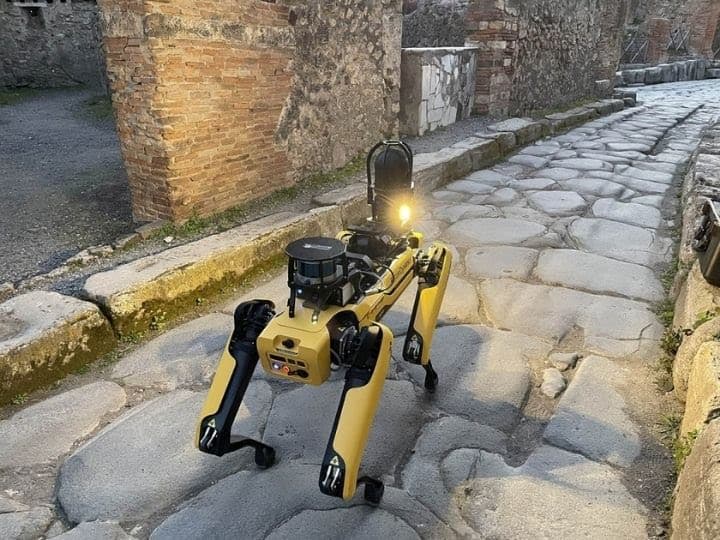Spot is a robot guard dog capable of inspecting even the smallest spaces in complete safety, gathering and recording data useful for the study and planning of interventions.
How Does The Robot Dog Work?
Spot is a quadruped robot made by US-based robotics design company Boston Dynamics which can operate on different types of terrain with agility and autonomy, allowing the automation of routine inspection activities and the collection of data in a safe manner. Illegal excavators trying to get their hands at artefacts often make underground tunnels. The robot dog will be tested for use in underground tunnels made by tomb raiders, who for years made a fortune by digging their way into the ruins and stealing relics to sell on to art traffickers around the world.
"Often the safety conditions within the tunnels dug by grave robbers are extremely precarious, as a consequence of which the use of a robot could signify a breakthrough that would allow us to proceed with greater speed and in total safety," the website quoted Director General Gabriel Zuchtriegel as saying.
In 2013, the United Nations Educational, Scientific and Cultural Organization (UNESCO) had threatened to add Pompeii to a list of world heritage sites in peril unless Italian authorities improved its preservation. As a result, a project called Smart@POMPEI was started.
The innovative experiments form a part of the Smart@POMPEI project of the Archaeological Park of Pompeii, which aspires to an intelligent, sustainable and inclusive management of the Park, which makes use of an integrated technological solution. This has rendered Pompeii a Smart Archaeological Park.
Boston Dynamics had announced the robot dog in 2016. Spot was under development for years,and was released in June 2020 for US$75,000
The robot dog can also be used to inspect rocket launch sites, as demonstrated by SpaceX, and is being deployed in the French Army.

